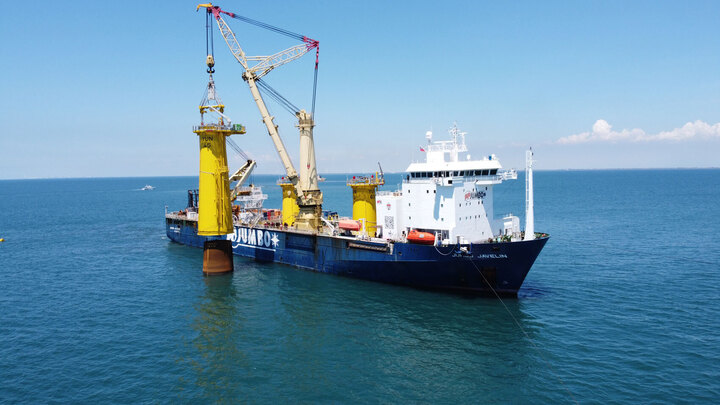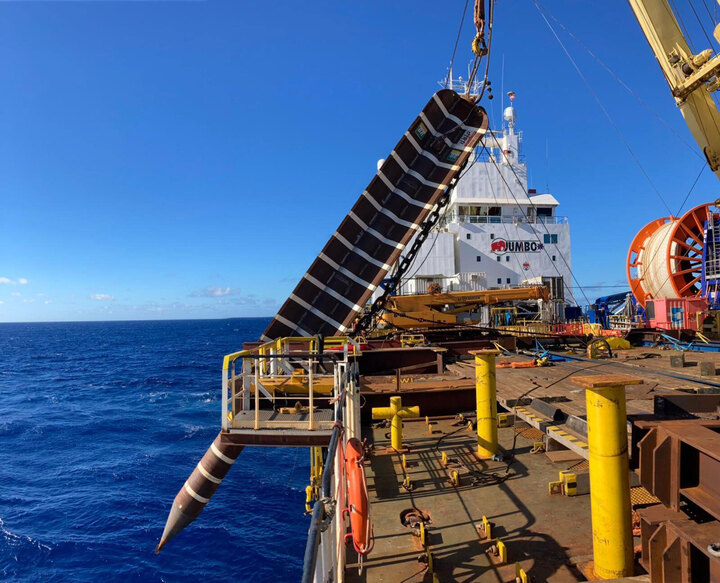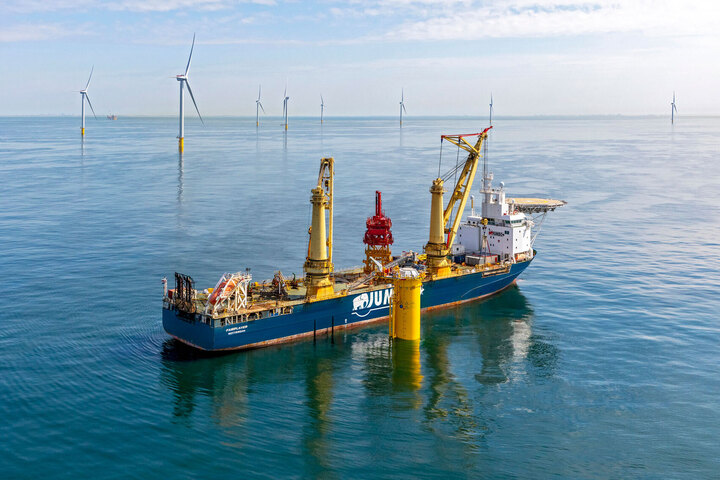NEWS
Jumbo Offshore Insights: The people behind the company
Engineering
A closer look at engineering
Besides its Heavy Lift Construction Vessels, Jumbo Offshore’s core capabilities have been built on the skills of a committed team of experts. To get to know the company better, this series of articles connect with some of the key people in Jumbo Offshore. After talking about Business Development and Tender Management in previous interviews, here we talk to Thijs Walraven about the Engineering scope of Jumbo Offshore’s work
Tell us about your role at Jumbo Offshore?
I started here in 2019 as Lead Engineer, but made the promotion to Section Lead Engineering Offshore earlier this year. Working with a team of eight project engineers and supported by draftsmen, marine- and structural engineers, I am responsible for the complete technical package of our offshore projects, from the tender up to and including the project execution.
Can you talk us through the main points of the engineering process at Jumbo Offshore?
We start early with engineering at Jumbo. This is an important point; we start at the moment that the first requests from the client come to us. This is still during the Tender phase, but the engineers are already working on the design of the maritime operations. As soon as the contract is signed, the engineering really gets into gear – we work in close cooperation with the operations team to prepare the installation manual. In preparation for the execution of the project, we get started on purchasing, fabrication and testing of all the project equipment. The final step of the engineering phase is the mobilization, this is when all the equipment is brought on board; this is the real start of the project. Throughout all these steps, we are continuously working on the risk analysis and mitigation and document reviews with the client. This is the more formal – but very necessary – side of the job.
Is every offshore job different?
Some people might think that it is possible to copy/paste certain jobs, but actually every client and every project has new requirements that use our ships in a different way to offer the most efficient transport and installation solution for the project. Solving these puzzles is the great thing about this job.
Photo 1 & 3 Jumbo Javelin working on the Anholt offshore windfarm development
Photo 2 The Jumbo Javelin installing Petrobras’ torpedo anchoring system
How do you guarantee the flexibility of the engineering during the project?
We have an extensive preparation phase when we try to mitigate all the risks and prepare for any eventuality. However, it is very important to stay flexible because things can happen during the project execution that might cause a change in plans. For example, you have to assume that equipment can fail while at sea so you have to think about various contingency scenarios.
What influence does engineering have on safety?
I think that the engineering team can have a gigantic impact on the safety of a project. While PPE like helmets and gloves are involved during the actual project execution, our engineering work has an impact on the design of the operations. We make sure that the vessel crews can work safely, and that they don’t need to get too close or have to climb up too high. Effective sea fastening and lifting tools are good examples of how engineering can eliminate risk to personnel.
“"Solving these puzzles is the great thing about this job."”
Thijs WalravenLead Engineering Offshore - Jumbo Maritime
Do you have much contact with the client?
Yes, the client contact is very important; we have to understand what they are looking for, and what the requirements are. And we need to be able to explain our work methods. For example, we don’t have ‘standard’ offshore ships – we can mobilise our vessels with the equipment that the project needs. We can add a fly jib to our cranes for extra lifting height for offshore wind projects. Or we can add deep water winches to our cranes or ROV spreads for deep water jobs. The client is involved with the production of the installation manual and with the constructibility review. After all, we can make a plan but it is imperative that the client is on board with this.
We saw that you were on board the Fairplayer during a project last week. Is it nice to see your theoretical work progress into practical?
I think that everyone on our team likes to go on board. It’s useful too because you get a chance to see everything that you’ve been working on in the static situation of the office in action in the dynamic maritime environment. We go on board in a ‘field engineer’ role, where we monitor the project and help out where we can with improvements or changes.
Is engineering all about ‘bigger is better’?
Our work is not just about designing the big equipment; it can also be about the finer details. Some of our work like the delicate placing of a pin or turning a bolt during a deep-sea ROV run, for instance, can be a bit like an unmanned space mission. It is certainly true that, on offshore projects, the devil is in the detail.
From your LinkedIn profile, we see that you worked for some big offshore companies before joining Jumbo. What makes Jumbo Offshore special?
The fact that the Engineering and the Operations are so strongly and closely connected makes this a great team. During the engineering phase, for example, we work side-by-side with the people who will be actually working offshore. And during the mobilisation and execution phase, the engineering team go on board. Engineering decisions are often made based on the expertise of the offshore crews. This is possible because Jumbo Offshore is quite a small organisation; we have short and very effective lines of internal communication.
More Offshore Insights
OTHER OFFSHORE INSIGHTS
The people behind the company
Jumbo Offshore is fascinatingly dynamic. Besides its floating assets (the Heavy Lift Construction Vessels), the company’s core capabilities have been built on the skills of a committed team of experts. This series of articles connects the key people in Jumbo Offshore’s operations. Find Brian Boutkan’s end-of-year update here.
Read why Business Development Manager Alexandra Santiago thinks that early engagement with clients gets projects off to the best possible start here. And stay tuned for the next Jumbo Offshore Insight which will take a closer look at Engineering.


